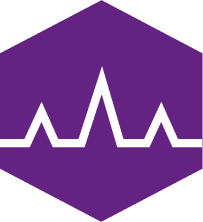Fragment Screening & Fragment-Based Drug Discovery Services
Together with Red Glead Discovery we run fragment screening and fragment-based drug discovery services platform and offer exclusive access to our high-throughput WAC™ fragment screening technology.

Integrated Drug Discovery
Why WAC™ fragment screening
- Physiological buffer as a mobile phase
- Label-free and detection by MS (enables built-in quality control)
- Straightforward detection of retention times from which Kd can be calculated
- Potential for high throughput screening (up to 5000 fragments per week)
- Low material consumption (<5 mg protein)
- mM hits can be identified by screening fragments at low concentrations (1-5 µM)
- Immediate hit ranking and control of hit quality
- High hit rates from 1-20% (avg 6%)
WAC™ fragment screening & Integrated Drug Discovery
SARomics Biostructures and RG Discovery’s fragment screening and fragment-based drug discovery services platform offers exclusive access to high-throughput fragment screening, state-of-the-art protein sciences, structural biology, and biophysical characterization capabilities. The jointly owned proprietary weak affinity chromatography (WAC™) fragment screening technology seamlessly integrates with our cutting-edge biophysical techniques such as thermal shift assay (Differential Scanning Fluorimetry, DSF), isothermal titration calorimetry (ITC), X-ray crystallography, and protein NMR spectroscopy for rigorous testing and validation of hits.
After seven years of intensive testing, WAC™ has unequivocally proven to be a cost-efficient, high-throughput method for generating superior starting points for hit-to-lead Medicinal Chemistry programs, ensuring project advancement. WAC™ is widely utilized in:
- Screening for novel chemical starting points
- Assessing the druggability of new targets
- Finding differentiated backups in mature projects
- As a rescue mode for challenging targets (protein-protein interactions, etc.)
Our fragment screening group collaborates closely with the protein science, computational chemistry, and medicinal chemistry teams to achieve a comprehensive and well-integrated fragment-based drug discovery solution. We focus on driving the project from the initial hit identification to hit expansion, lead generation, and lead compound optimization. Ultimately, our goal is to nominate the most promising candidate for drug development. Please visiti our knowledge and methods center a discussion of the most optimal strategies for structure-based drug design.
Case Studies
First-In-Class Aqilion TAK1 Kinase Inhibitor
Aqilion’s Alnitak program is aimed to discover and develop an inhibitor of TAK1 kinase, a central switch for inflammatory signals and activation of several inflammatory cytokines. A successful application of fragment-based drug design, compound synthesis, and evaluation was performed within an integrated drug discovery program to develop first-in-class TAK1 kinase inhibitors. The project was conducted in close collaboration by three partners: SARomics Biostructures, Red Glead Discovery, and Aqilion. Subsequently, Aqilion entered into an exclusive license agreement and strategic research partnership with Merck to discover, develop, and commercialize small-molecule inhibitors of TAK1.
See also our blog post on this issue.
WAC™ Fragment Screening Of IL-23
Fragment screening of IL-23 was performed using WAC™ technology. Interleukin 23 (IL-23) is an inflammatory cytokine consisting of an IL-12B (p40) and an IL-23A (p19) subunit. IL-23 plays a crucial role in maintaining and expanding T helper type 17 cells (Th17 cells). Abnormal Th17 cell activity is linked to various autoimmune conditions. Antagonist antibodies that target IL-23 (such as ustekinumab) have been approved for treating autoimmune diseases. However, an orally administered small-molecule inhibitor of the IL-23 pathway has the potential to offer substantial benefits to patients. Thus, the identification of small molecule inhibitors of the IL-23 pathway is highly sought after, although it has proven to be difficult. Fragment screening by WAC™ is well suited for generating hits for protein-protein interactions (PPI). In this study, WAC™ was used in conjunction with TSA, NMR spectroscopy, and X-ray crystallography for integrated hit finding and validation.
Feel free to download the poster for more details.
WAC™ SMARCA4 Bromodomain Fragment Screening
Acetyllysine recognition domains known as bromodomains are found in human proteins. Small-molecule mimics of acetyllysine have been discovered to compete for the bromodomain binding pocket. This competition can disrupt the cellular localization or binding to proteins. As a result, bromodomains are considered attractive targets for drug development. In collaboration with Read Glead Discovery, we utilized WAC™ screening technology in hit identification, hit validation, and expansion to identify high-affinity small-molecule binders to the SMARCA4 bromodomain.
For details feel free to download the poster.
NMR spectroscopy & X-ray Crystallography Screening
NMR spectroscopy and X-ray crystallography are two powerful methods for screening fragments in fragment-based drug discovery. They allow the identification of weak binders to proteins and detailed mapping of molecular interactions in fragment-protein complexes. Fragment screening involves the use of a small library of molecular fragments with a molecular weight in the 100-300 Da range. The interactions of these molecules with the target can be directly studied when using X-ray crystallography or NMR spectroscopy. Additionally, the three-dimensional structure helps guide the expansion from hits to leads and the optimization of the affinities and specificities of the compounds.

Below is a summary of our computational chemistry services:
- Pharmacophore and shape-based compound screening
- Ligand-based drug design
- Scaffold hopping
- Design of screening fragment library
- QSAR analysis and optimization
Computational Chemistry Services in Drug Discovery
Computational chemistry methods play a crucial role in fragment screening and fragment-based drug discovery. These methods can be used for virtual screening, lead generation, and structure-based design of new lead molecules. We often assess ligand’s efficiently through docking and employ a combination of pharmacophore and shape-based virtual screening methods to optimize new ligands, explore new compounds through scaffold hopping, and conduct quantitative structure-activity (QSAR) analysis. These tools help us speed up the drug discovery process significantly. When screening compounds in silico, we utilize a virtual library containing millions of purchasable compounds that have already been filtered to remove reactive groups and excessively lipophilic molecules.
Our computational chemistry services team closely collaborates with the medicinal chemistry, X-ray crystallography, and NMR spectroscopy teams as part of our integrated drug discovery process. This collaboration effectively advances the project from hit identification through structure-based hit-to-lead, lead optimization, and candidate drug nomination. Our learning center offers comprehensive information on different lead design strategies based on the available data.
Application of Structure-Based Drug Design in a Recent Publication
Zetterberg FR, Diehl C, Håkansson M, Kahl-Knutson B, Leffler H, Nilsson UJ, Peterson K, Roper JA & Slack RJ (2023).
Discovery of Selective and Orally Available Galectin-1 Inhibitors
J. Med. Chem. 2023, 66, 24, 16980–16990 https://doi.org/10.1021/acs.jmedchem.3c01787
PDB entries:
8OJP – Human galectin 1 in complex with inhibitor (on hold until publication)
A new series of orally available α-d-galactopyranosides with high affinity and specificity for galectin-1 have been discovered. Researchers replaced six-membered aryl-triazolyl substituents in previously reported galectin-3-selective α-d-thiogalactosides with five-membered heterocycles such as thiazoles to achieve high affinity and specificity. One specific compound, GB1490, showed promising results (Kd galectin-1/3 0.4/2.7 μM) and was further analyzed for selectivity across various galectins, demonstrating a 6- to 320-fold selectivity depending on the specific galectin. The X-ray structure of GB1490 bound to galectin-1 revealed that the compound binds in a single conformation in the carbohydrate-binding site.

We invite you to visit our publications page to explore more examples of our contributions to projects.





